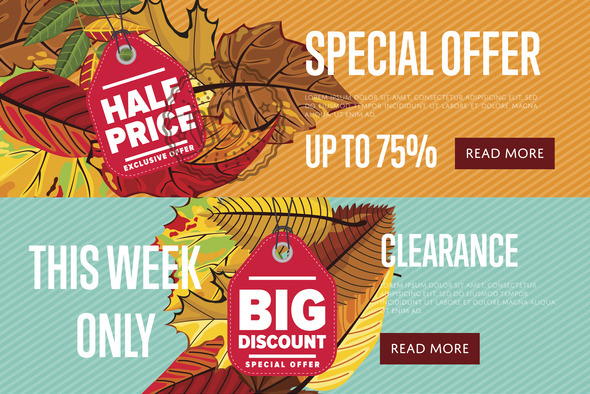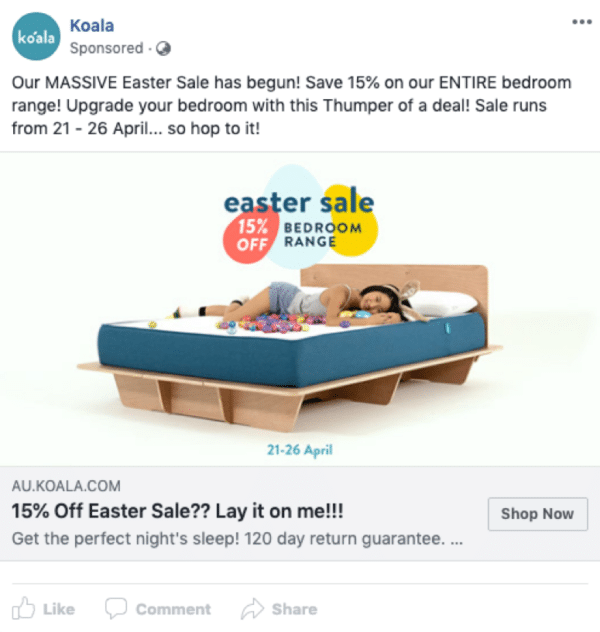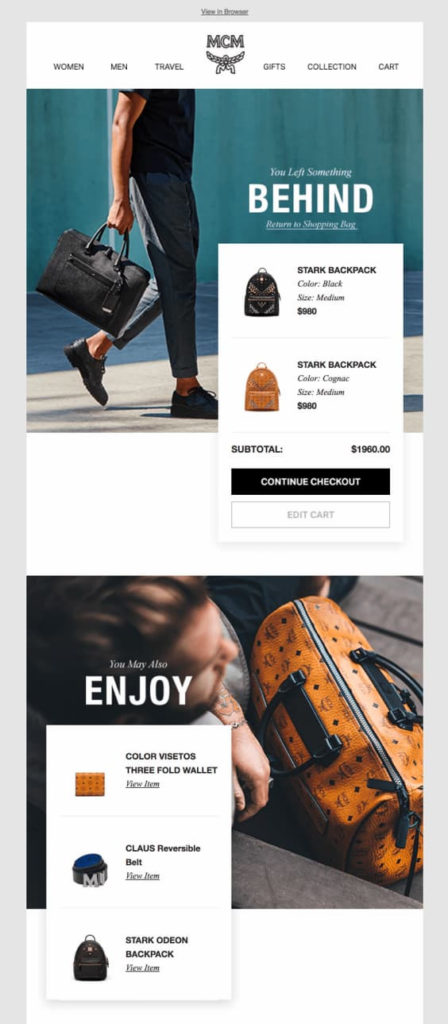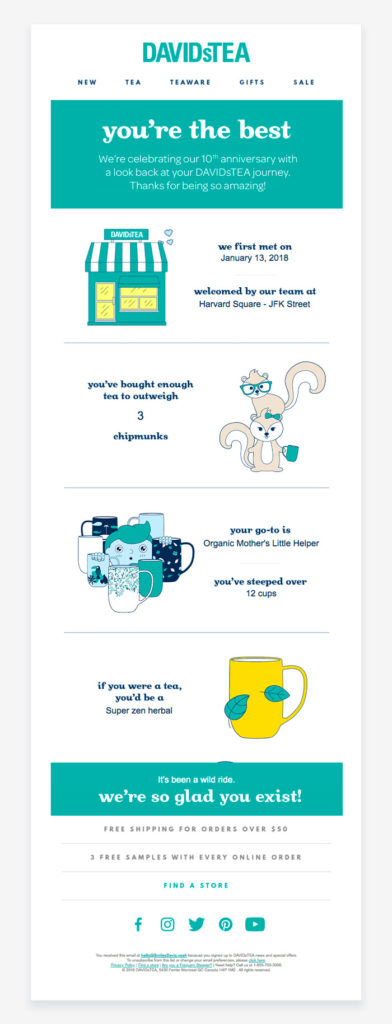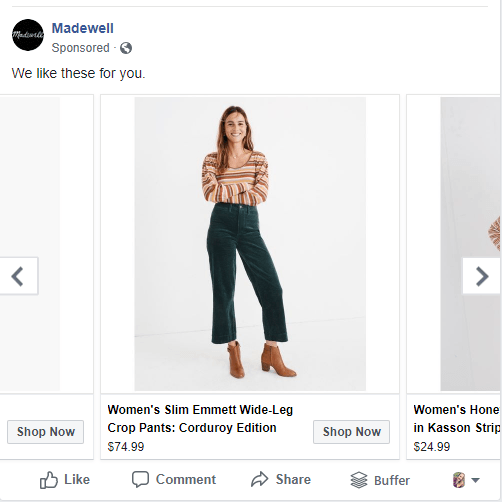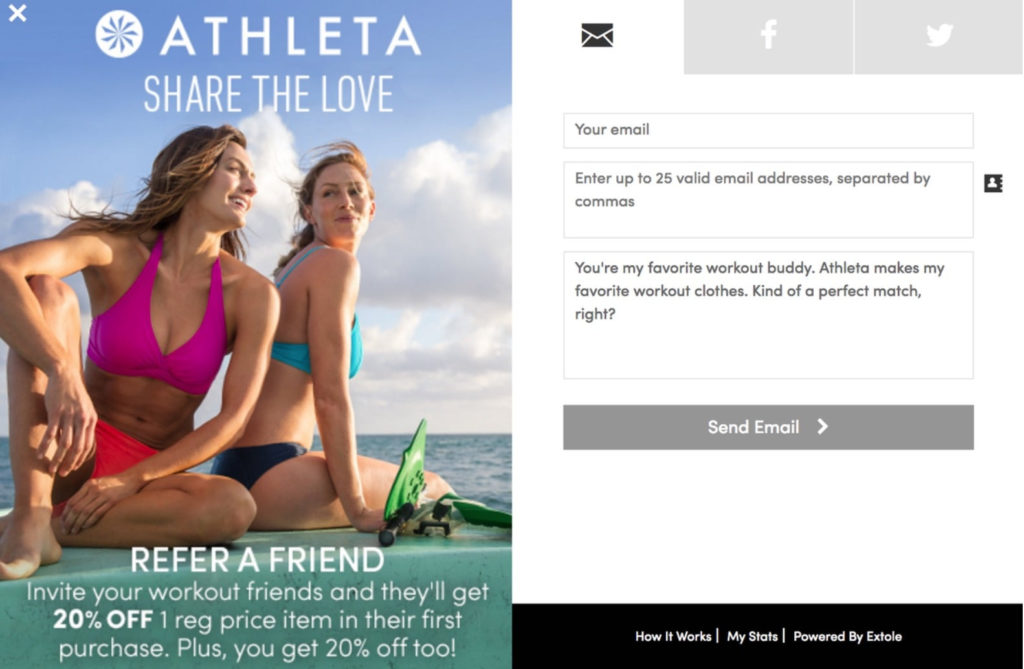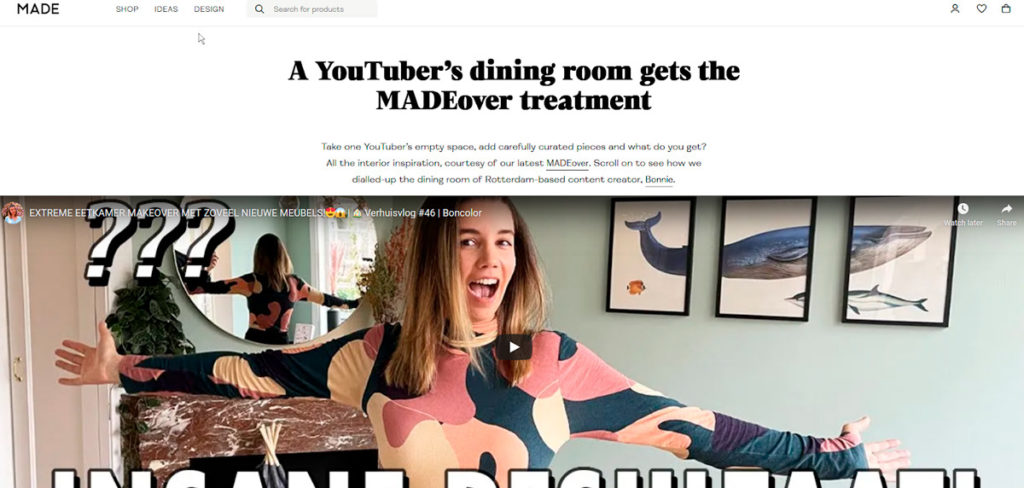[ad_1]
Since 2015, clothing brand ASOS has grown revenue by an average of 22% year over year. Not for lack of competition, but as the result of a carefully designed ecommerce marketing strategy.
This is what drives growth for online stores like ASOS, despite existing in a saturated market.
In this article, you’ll learn how to build a powerful ecommerce marketing strategy using customer research and messaging development, and how to use it to determine which marketing tactics will best reach your target audience.
What exactly is an ecommerce marketing strategy?
Your ecommerce marketing strategy is the blueprint and high-level vision that guides how you’ll interact with prospects, the channels you’ll use to reach them, and the messaging you’ll develop to communicate benefits and build your brand.
Where many marketers fall over is confusing strategies and tactics:
- Strategy is your high-level game plan and should be heavily research-based (to gain a deep understanding of customer challenges, desires, and motivators).
- Tactics are the specific activities you’ll use to communicate with customers (for example, advertising on social media with a 20% discount code).
Both are critical. A strategy on its own doesn’t communicate with customers. Tactics without a strong strategy behind them fail to reach customers and don’t effectively communicate your brand value propositions.
The best ecommerce marketing strategies aid in:
- Aligning teams (alleviating the age-old marketing/sales rift);
- Setting and measuring against goals and KPIs;
- Reaching the right target audience (not just any customer who might fit);
- Achieving cohesivity across channels and creating an immersive user experience.
How to build an ecommerce marketing strategy
Any marketing strategy should be led by marketing goals. Vague, high-level goals (such as “improve lead generation,” “increase online sales,” or “attract more customers”) are not specific or measurable enough to define marketing success.
Use the SMART goal-setting methodology to filter down:
- S – Specific
- M – Measurable
- A – Attainable
- R – Relevant
- T – Timebound
If you want to “increase sales” the SMART framework would look something like: “Increase new ecommerce sales by 10% by the end of quarter two.”
From here, attach valid marketing metrics to each goal. Common examples include:
- Average order value;
- Sales conversion rate;
- Cart abandonment rate;
- Customer acquisition cost;
- Customer lifetime value;
- Bounce rate;
- Click-through rates;
- Pop-up engagement rates;
- ROI (return on investment;
- Average inventory sold per day.
Some goals may be measured by more than one metric. Above, the average order value and sales conversion rate equally impact total sales growth. Both of these metrics can be used to measure progress.
Your customer research then informs how you’ll go about achieving those goals.
Engage in effective customer research
Your ecommerce marketing plan will only be effective if you understand key customer traits.
Marketers often build their strategies based on assumptions, or they miss key pain points and desires by going too shallow in their research.
A common mistake is to build a customer persona in a boardroom based on how well you think you understand your customers. In reality, you should be identifying your customer personas and their true problems.
As Rand Fishkin, CEO of SparkToro, says:
That’s the first problem with personas—they’re often interesting, rarely actionable. Or worse, they suggest actions that could be taken but don’t solve prioritized problems inside your organization.
Rand Fishkin, SparkToro
Ecommerce marketing strategies that don’t speak directly to customer challenges and desires won’t connect or convert.
ICPs and customer personas are common in marketing circles but often aren’t grounded in sufficient customer research.
To get to the heart of what customers care about, conduct customer interviews and ask open-ended qualitative questions such as:
- When did you realize you needed a product like ours?
- Did you consider any alternatives to buying from us?
- What concerns or hesitations did you have before you decided to buy from us?
Undertakings like voice of customer (VOC) research and buyer intelligence surveys are key to crafting marketing messages that resonate.
Voice of customer research allows you to prioritize customer needs into an actionable hierarchy and then describe products and problems to them in their own words.
It helps you better segment needs by type of audience, so your messaging lands with the right groups.
Buyer intelligence surveys identify what your target audience thinks of the problems you’ve identified and how they respond to your messaging.
Having this deeper data sharpens your marketing moves way beyond boardroom workshops.
Perform a competitive analysis to determine how you’ll differentiate
Everyone is selling online; you’re competing in a digital mall with endless aisles.
To stand out, learn what competitors are doing so you can effectively differentiate.
Build a list of your top competitors, then for each, analyze:
- Their social media presence. When are they posting? What are they posting? Are they running sponsored ads or relying only on organic? Are they using influencers?
- Their website, messaging, and positioning. How are they representing themselves? What do they describe as their primary customer benefits? Who might their products and brand appeal to?
- Their content marketing efforts. What do their email campaigns look like? How are they providing value to customers’ lives?
- Their offers and promotions. What’s compelling about their ads? What isn’t? What would make a buyer want to choose their product over yours?
Do the same for your own marketing efforts. For each competitor, build a Venn diagram to understand where you overlap, and where you differ (focus on the benefits you offer that they don’t).
Choose value propositions based on differentiation
In the image above, Chris Goward of WiderFunnel illustrates how to identify which of your value propositions will resonate most with potential customers, while differentiating your product and brand.
Here, divide your value props into three categories:
- Point of Parity (POPs). The value propositions your products offer, that matter to your customers, and that your competitors also offer. They are important, but not what sets you apart.
- Points of Irrelevant (POIs). The value propositions your products offer that customers don’t care about. They don’t make for effective messaging.
- Points of Difference (PODs). The propositions your products offer, that matter to your customers, that your competitors don’t offer.
PODs are the value props you need to prioritize on your ecommerce site. They tell customers why they should buy from you.
Use semiotic analysis to design messaging that resonates
In a study of more than 35,000 landing pages, Unbounce found that effective copy had more than twice the impact of design on conversion rates.
The specific words you use in your messaging are what convert readers into payers.
Use semiotic analysis (the study of signs and symbols) to reverse engineer effective messages:
- Determine the feeling you’d like to elicit;
- Choose words and phrases (as well as colors and symbols) that relate to those feelings;
- Weave those words into your messaging.
Take Lush.
Their “Dirty Scent Collection” is all about vibrant cleanliness, so they use words like “fresh,” “herbaceous,” and “invigorating” to connect with the readers’ senses.
This wording, combined with a palette of fresh, soothing green tones, appeals to a sense of liveliness and cleanliness.
Prioritize marketing channels based on customer feedback
Your customer research data (not assumptions) informs which channels to prioritize.
Ask customers about their preferences with questions like:
- Which social media platforms do you use daily?
- How often do you check your email inbox?
- Where do you go to look for information when assessing a new purchase?
These answers will provide a starting point, however, some testing and analysis may be required to determine which channels perform best.
For example, you may run the same ad on both Instagram and TikTok to measure which platform performs best in lead acquisition.
Use growth marketing approaches to optimize ecommerce strategies
Take a leaf out of growth marketing playbooks and focus heavily on testing, analysis, and optimization.
Growth marketing involves running a series of targeted tests to understand which marketing tactics (and subsets thereof, such as design elements and copy choice) perform best.
The most simplistic version of this is the A/B test. In this example, MailChimp ran two ads side by side, with the one on the right performing better than the one on the left.
Now they know that in-situ images perform better than branded images. But growth marketers would go further, testing a variety of other in-situ content types, relevant content forms (video vs. static images), and copy.
Use customer research to identify the marketing channels and messaging that should attract and engage buyers, then conduct growth experiments to validate your hypotheses.
7 powerful ecommerce marketing tactics for 2022
You don’t need to own every channel, at least not immediately.
Focus first on those that will move the needle rapidly, then expand.
1. Leverage FOMO in social media marketing
FOMO (fear of missing out) is a powerful motivator. Retailers have been taking advantage of this concept for decades, holding limited-time-only sales to build urgency.
Time-limited offers are effective, but not the only way to leverage FOMO in ecommerce marketing.
Take Booking.com.
They drive urgency by calling out when room availability is low, alerting would-be customers to take action quickly.
Double down and build even more urgency by showing viewers they’re not the only ones considering a purchase.
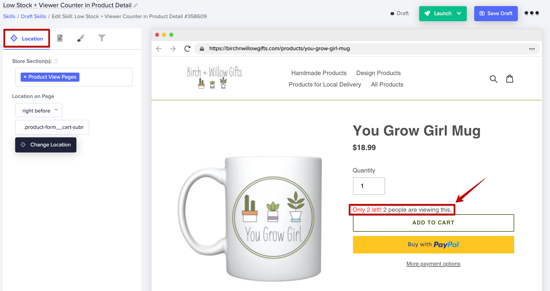
On social media platforms like Facebook and Instagram, use social proof and time-limited offers to drive action. In many cases, social media ads are a now or never deal — either your ad converts, or the customer moves on and forgets you.
Koala, an Australian mattress retailer, accesses FOMO in their Facebook ads by limiting promotional offers to just five days.
2. Segment and personalize email marketing efforts
Ecommerce email marketing isn’t a “send to all” affair.
Marketing automation is important, particularly as your email list grows, but segmentation is key.
Audience segmentation ensures your messages resonate with each type of customer.
Identify key characteristics that delineate one audience segment from another, then create and distribute appropriate content.
Take Burrow, an ecommerce business specializing in home furniture.
Burrow sells a number of product types, from sofas to rugs to bedroom furniture. They use intent signals (e.g., the product pages a given customer has been browsing) to segment and distribute content accordingly.
This email, for instance, would be sent to prospective customers marked as interested in living room furniture.
In this case, they don’t simply use customers’ names in the email subject line, but provide product recommendations based on that buyer’s shopping history.
MCM, for example, uses personalized emails to remarket browsed products, and provide upsell and cross-sell recommendations.
Ecommerce email marketing goes beyond promotional content, however. It’s critical to nurture the brand-buyer relationship to increase customer retention.
Take DAVIDsTEA, which celebrates customer anniversaries with a personalized email recapping the history of their relationship.
This makes the recipient feel special and appreciated, thus driving customer loyalty.
3. Set your sights on Google’s Popular Products
Up until 2020, Google Shopping was a paid platform for online retailers to advertise new products, akin to Google Ads.
Now, Google Shopping consists of free listings (primarily), and is a viable tactic for many ecommerce apparel sellers, particularly if you’re able to get listed on Google’s Popular Products.
When customers use the Google search engine to look for items like clothing and shoes, popular products come up as the top results. Customers can now shop directly from the SERP (search engine results page).
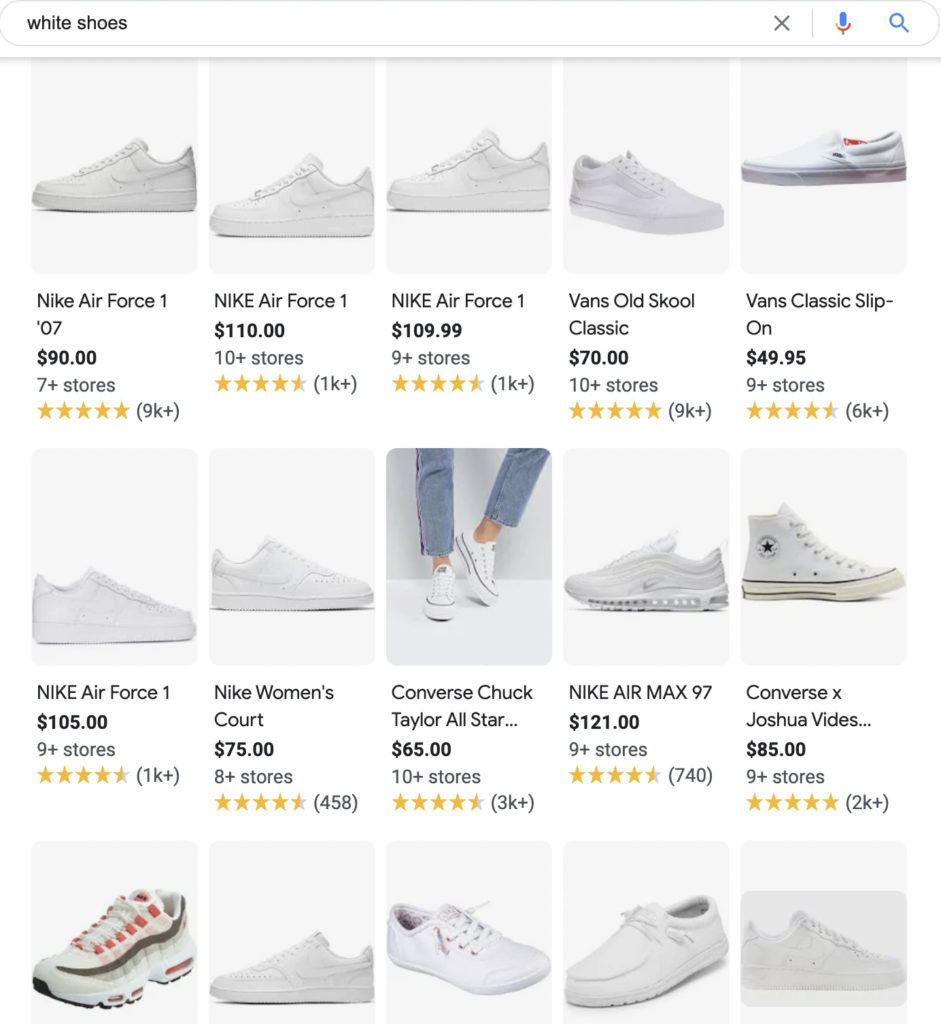
Google doesn’t actively advertise how to win a top position, but the general thinking is that purchase volume, customer reviews, and testimonials play a part in getting listed.
This is a long-term play — much like SEO (search engine optimization) — but can be supplemented by Pointy, another Google product.
Pointy is a point-of-sale hardware and ecommerce app that ships product and sales data to Google in real-time. Pointy tells Google how “popular” each of your products is based on this information.
Google also recommends signing up for their Merchant Center program and uploading products directly, or through a data markup structure on your ecommerce website.
4. Choose influencers based on influence, not audience size
Influencer marketing can be another viable strategy for expanding your reach and catering to a new audience.
But don’t fall into the trap of choosing influencers because of audience size.
An audience of 5,000 people who have a strong need for your product is better than 20,000 who don’t care.
Take Naked Juice UK, which teamed up with Danielle Peazer for an influencer marketing campaign.
This collaboration makes sense. Peazer has a large following in the health and fitness community, precisely where Naked Juice UK plays.
This collaboration, on the other hand, between Chiara Ferragni and Hublot, doesn’t.
Ferragni has a huge audience (more than 27M followers), but there is nothing to suggest that any of them are particularly interested in buying a watch, particularly a $23,000 one.
Note, too, the lack of engagement on this post.
When choosing influencers, prioritize relevance and past results (ask for proof of success in previous campaigns) over audience size.
5. Run retargeting campaigns that convert with personalized discounts
Retargeting (also known as remarketing) is a tactic used by ecommerce brands to capture sales from website visitors who didn’t convert.
Say a visitor is online shopping on your site and views a selection of products. Perhaps they add some items to a shopping cart but don’t go through with a purchase.
A retargeting pixel on your site automatically tracks which products they were browsing, and your specialized marketing tools run targeted ads for them.
They might appear in digital banners on other websites, or in a social media feed, like the below example from Madewell.
Retargeting like this is missing the point, though.
The customer already had the chance to purchase and decided not to. Drawing attention back to it might convert a few people, but it’s more effective to give them a reason or incentive to buy.
The simplest execution of this is a custom discount.
This ad from LikeBunny, for instance, combines a retargeting approach with a limited-time discount code, leveraging FOMO to deliver a compelling reason to buy now.
They don’t know when a sale will pop up again, so they better act now before it’s too late.
6. Use referral programs to attract new customers and reward your current ones
To maximize your opportunity using referral programs, make incentives compelling to both the referrer and the referee.
Otherwise, you’ll struggle to convince anyone to take action.
Take Athleta, a women’s yoga clothing line.
Athleta’s referral program gives its customer base 20% off their next order in their ecommerce store.
The referred customer also gets 20% off their first order.
When designing a referral marketing program, consider both sides of the “What’s in it for me?” coin.
7. Nurture customer relationships using content marketing
The best ecommerce digital marketing strategies go beyond acquiring new customers.
Brands that focus on retention and nurturing customer relationships win in the long term.
Every improvement that you make to retention also improves all of these other things — virality, LTV, payback period. It is literally the foundation to all of growth and that’s really why retention is the king.
Brian Balfour, Reforge
The best way to keep engaging with your customers (without acting overly salesy) is to create educational content relevant to your product vertical.
Take Monsieur Chaussure, a European leather shoe retailer. They offer detailed guides on how to care for a diverse selection of products.
It’s helpful, and likely subtly leverages upselling tactics with a “help us support you” vibe.
Ecommerce social media efforts can be used to nurture relationships too. Take this post from Airbnb, which shouts out one of their accommodation partners.
Or MADE, a furniture retailer that took an educational approach to influencer marketing; partnering with a YouTuber to makeover her apartment using MADE’s products.
Clever, convincing, and customer-oriented content drive loyalty and retention.
Conclusion
A successful ecommerce marketing strategy, designed and executed correctly, can catalyze huge revenue growth.
Ground your strategy in deep customer research to design messaging and value propositions that resonate. Then, focus on owning a small selection of channels and tactics rather than spreading yourself too thin.
Ready to sharpen up your ecommerce marketing skills? Learn from the top 1% of experts with our Ecommerce Marketing Certification Training Program.
[ad_2]
Source link





